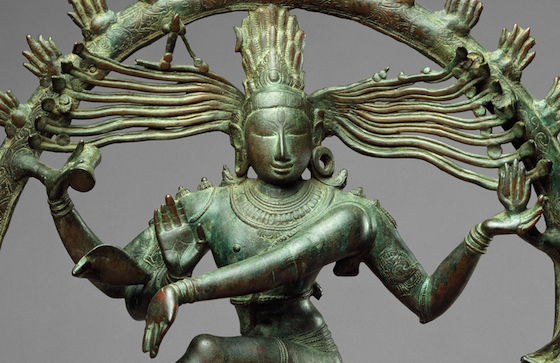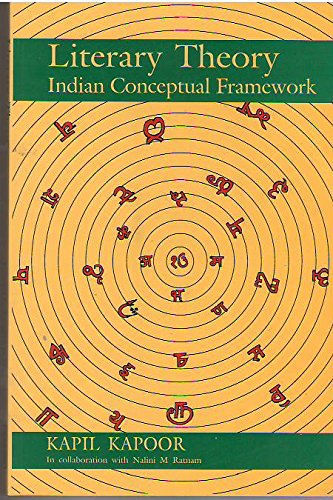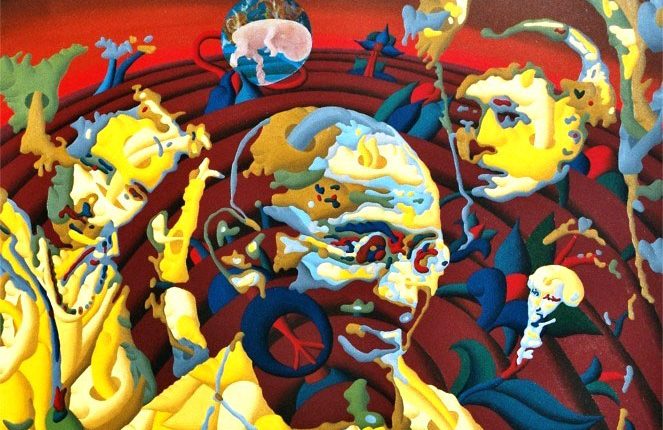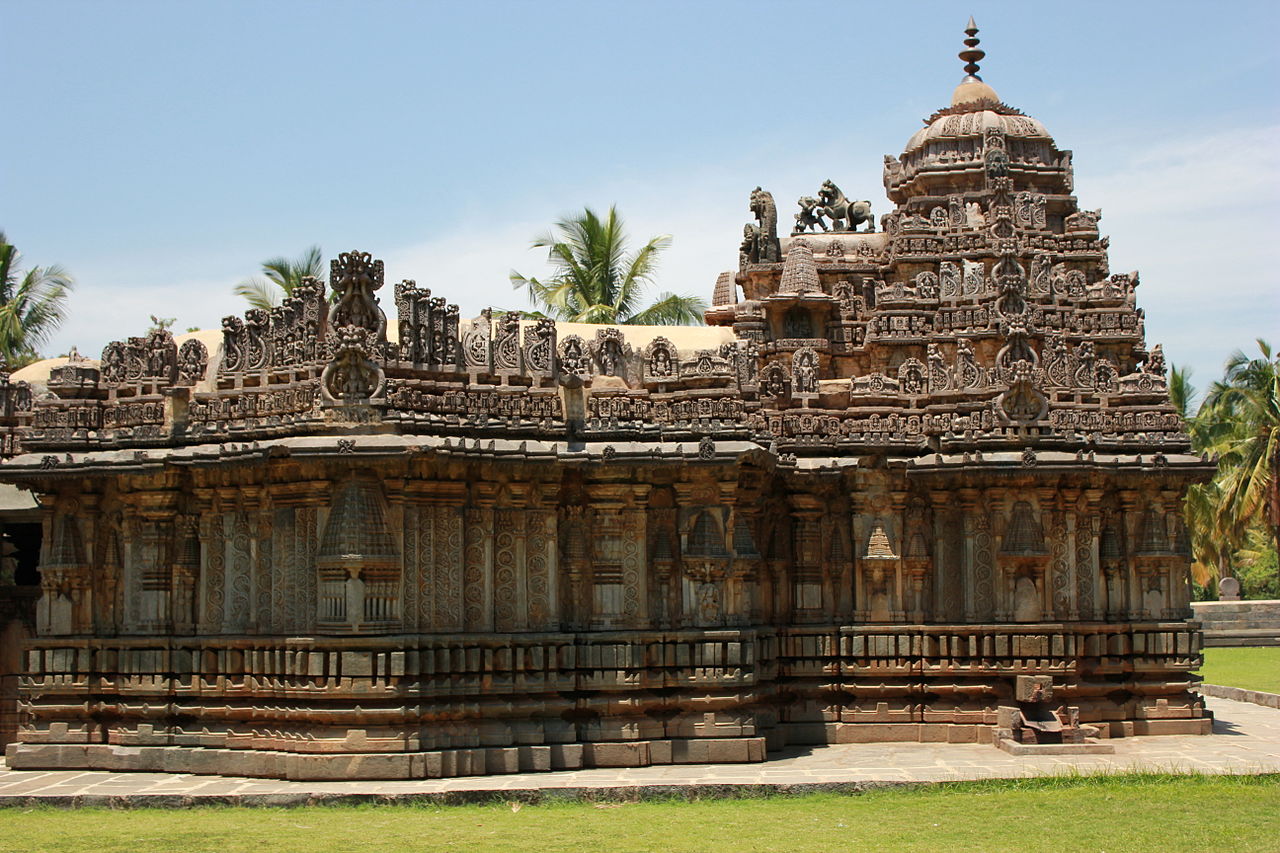- Visitor:15
- Published on:
Art and Creativity in Indian Tradition
What is the conception of art in Indian tradition? Read this insightful excerpt from Kapil Kapoor’s work to find out.

If we attend to the scope/definition of aesthetics, we can understand why in India there is no sastras corresponding to aesthetics. Aesthetics is the science of things perceptible to the senses, the science of the conditions of sensuous perception. In 1833, the word “aesthetics” was used to mean the philosophy of taste, or of the perception of the beautiful. In a community whose dominant philosophy looked upon things perceptible to senses as just Abhasa matra, mere appearance, it is understandable that no science takes cognizance exclusively of the beauty of perceptible forms and that art never set before itself the object of creating beauty merely of the visible form.
What is sought to be represented is bhava-the Tattva or essence of being. Thus the Buddha figures do not seek to represent the physical details-instead what they represent is the inner state of mind. Buddha’s compassion and deep seated peace – Karuna and Santa bhava. The anonymous artists, as Coomaraswamy (1957) points out, do not aim to create “beauty”, and my “beauty” that appears in the art-object is the beauty that the artist experiences and ‘reveals’ in the object to which his mind attaches itself in adoration, i.e., reverence and love. The dominant Indian world-view (Advaita) predicates the immanence of the absolute, the universal presence of reality. Coomaraswamy talking of the artist’s perception of this reality and the consequent revelation of beauty says that this doctrine of the universal presence of reality as the immanence of the absolute (Brahman)
Implies that through… the world of everyday experience may be seen by those of penetrating vision (artists, lovers and philosophers) glimpses of the real substrate… precisely as love is reality experienced by the lover, and truth is reality as experienced by the philosopher, so beauty is [this] reality as experienced by the artist… in so far as we see and feel beauty, we see and are one with Him [Brahman]… This beauty can be experienced in an object of devotion… the Absolute is manifested equally in the little and the great… we can… achieve Beauty… only in learning to see those things as they really are, infinite or beautiful. The artist reveals this beauty wherever the mind attaches itself. (1957, 42,43, 53)
Wherever the mind attaches itself, that is the condition of art-and the mind attaches itself, not directly to the absolute, but to objects (Coomaraswamy 1957, 43) which are seen as His reflexes. So the two worlds, of spirit and matter, Purusa and Prakrti, are one (Coomaraswamy 1957, 43). It is one undivided all, as illustrated by what Heimann calls
The well-known metaphor of the spirit riding as a mere passenger in the chariot of the cosmic urge… the body is the vehicle, the objects are the course, the material sense organs are the horses, while the intellect… is the driver, the Spirit being merely a spectator. (1937,41).
This explains the coexisting faith in the dogma of plurality and the principle of one universal spirit (monism).
As the object, like all objects, is imbued with Brahman, the artist’s mind attaches itself to the object in reverence and love. This is the Indian understanding of the creative process, the conception of art as Yoga. Yoga is the system of altering/heightening/unifying consciousness by ridding the citta, mind, of all vrttis (cognitions, impressions) through intense mental concertation that merges the subject-object and eliminates the instrument, i.e., the sense, from the process of jnana, knowledge. Art is the product of such a yoga, of the yoking of the artist’s mind to the object.
Coomaraswamy (1957) explains this concept by reporting the process of image/idol making as it has been described in the Indian texts. After making the initial observation that “a purely abstract philosophy or psychology like that of early Buddhism does not demand aesthetic expression”, he adds “it was the spirit of worship which built upon the foundations of Buddhist and Vedantic thought the mansion of Indian religion, which shelters those whom purely intellectual formulae could not satisfy” (Coomaraswamy 1957, 29). He further says: “In devotional faiths was completed the cycle of Indian spiritual evolution from pure philosophy to pure mysticism, from knowledge to love” (Coomaraswamy 1957, 33).
Hence the beautiful temple images, the idols that are visual representations of the artist’s conception of the saguna gods and goddesses. The image that the imager transcribe is hisparticular image of the god: “The lineaments of images are determined by the relation which subsists between the adorer and the adored” (Sukracarya quoted by Coomaraswamy 1957, 176-77).

What is the creative process involved in this conceptualization and then its transcription or representation? The artist’s concentration on the object of his creativity is an analogue of the yogic meditation (samprajnata/savikalpa samadhi): “Let the imager establish images by meditation on the deities who are the objects of his devotion… In no other way, not even by direct and immediate vision of an actual object, is it possible to be so absorbed in contemplation, as thus in the making of images” (Sukracarya quoted by Coomaraswamy 1957, 26).
This practice of visualization, it is pointed out, “is identical in worship and in art” (Coomaraswamy 1957, 27). Coomaraswamy (1957) then takes an example from Buddhist sources to explicate the artist’s meditation. There are seven well-marked stages:
- The artist (sadhaka, Yogin) ceremonially purifies himself (cf. Patanjali’s Yogasutra 2.1-28).
- He withdraws to a solitary place.
- There he offers daily acts of worship to the deities and the deity.
- He “must realize in thought the four infinite moods of friendliness, compassion, sympathy and impartiality”.
- Then he must meditate on the vast emptiness (sunyata) (This idea of the abyss destroys the ahamkara, the ego-consciousness.)
- Then “he should invoke the desired divinity of the desired utterance of the appropriate bija”. (The mystical letter forming the essential part of the mantra of a deity).
- Finally, on pronouncing the dhyana mantra (description of the personal attributes of the deity), the divinity appears visibly, “like a reflection” or “as a dream”.
This image then the artist transcripts or transfers in stone or in words. In words yes, for the same creative process holds for the Kavi – Valmiki in the Balakanda described an identical process of visualization before he set forth the story of Rama. And Coomaraswamy Swamy cites Vasubandhu who in the invocation to Vasavadatta speaks of the poet “as seeing the world, like a jujube fruit, lying within the hollow of his hands” (1957, 176). The artist in this conception of art and creative process is a pious artisan (Coomaraswamy 1957,30), a worshipper or a practitioner of meditation (Sadhaka). He is not a creator – he is a revealerof the inherent Tattva/bhava. Now we can make sense of why the Indian tradition of philosophy and literary thinking treats Kumbhakara, the potter, as the paradigm artist. The Kumbhakaramerely fashions form out of preexisting substance-he gives rupa to dravya, and he does this by shaping (not by measuring, segmenting and cutting as would a carpenter). With his hands he is in communion with the mitti, clay through the hands to the clay and the form, rupa, comes alive. The forms (akrti/rupa) are inherent in the substance (dravya)-the artist reveals (makes manifest or visible) them, i.e., makes it possible for the senses to recognize them.
[Source: Kapil Kapoor and Nalini Ratnam, Literary Theory: Indian Conceptual Framework (New Delhi: Affiliated East-West Press), p. 79-83]
Center for Indic Studies is now on Telegram. For regular updates on Indic Varta, Indic Talks and Indic Courses at CIS, please subscribe to our telegram channel !
- 7 min read
- 0
- 0










